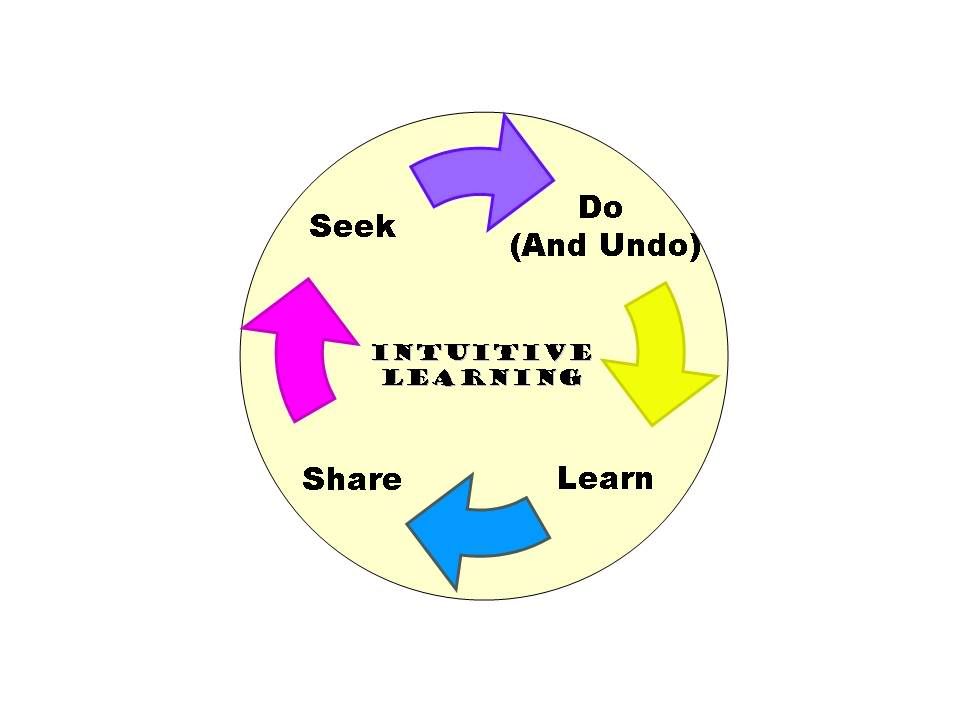Teaching the Intuitive Learning of Software

My Computer Fundamentals has taken a dramatic shift this year. In years past, I've basically taught MO "Microsoft Office!" Word, Excel, PowerPoint, Access, as well as a smattering of other tools including Adobe PhotoShop.
However, last spring, I asked my readers the question Open Office or Microsoft Office: Which should I use? As I read the comments and pondered, I was stunned to realize that open source and web apps have created a whole new generation in software. To limit my student's understanding to only Microsoft products is a disservice and yet, Microsoft is still important.
Perhaps the Process is more important than the Product
So, I have spent the summer seeking curricula that will help me teach students HOW to learn software. I have often felt that it is the process of learning the new software and not the software itself that is the vital component of what I teach. As I've looked, I've really not found any methodology to help me teach students HOW to learn new software. So, feeing driven in this area, I have put pen to paper in order express the model of learning software that I've used for over 30 years as I've learned new software programs. I'm sure it will be significantly revised, but expressing it helps one understand it!
Largely based upon the scientific method, this is what I'm teaching my computer fundamentals students. Here is the model I am using at this time:
Seek
Students are to open the software and to seek in certain areas of the software to "intuitively" deduce what the software can do. They are to look at the software and its features in this order.
Do (and Un-do)
As they look at the features they are to look at them. They can try them and then undo them or they can just cancel out after looking at various features.
Learn
Through this process they learn.
Share
As effective Internet citizens in a rapidly moving society, I want my students to know that they need to share their knowledge. They are to share in the classroom and to share on their wiki when they learn something new and exciting!
The Methodology for this process
There has to be a system for them to explore the software. Because I couldn't find one, I again, have created a starting point. Perhaps there is a methodology I haven't seen, but here is where we started.
When students open a new software program that they have never used before, they are to explore the following in order:
- Menus
- Toolbars
- Drop Down Boxes
- Help
- Panes
- Dialog Boxes
The mneumonic device we use to remember this is "Mama told Daddy, 'Happy Pappy Day!'"
I used this to introduce Microsoft Word with very pleasing results.
Menus
We first looked at the menus starting with File and I asked them to share things that they think it can do. We then moved along every menu item and discussed each area.
Toolbars
Secondly, I pointed out the screen tips box that pops down when they point at each item with their mouse. We discussed the toolbar items we didn't see in the menus.
Drop Down Boxes
We discussed how arrows that point to the right cause boxes to drop down and we looked at those.
Help
Looking at the screen, we then determined how we could get help and tried to ask it a question.
Panes
I showed the task pane and discussed how many other software programs (Adobe in particular) have panes that are open on the screen that are to be used and not immediately closed upon entering the software. (A common happening among Microsoft users.)
Dialog Boxes
We then learned how the ellipses open dialog boxes and opened boxes and closed them.
In Conclusion
This intuitive learning method works well with the Socratic method that I use to teach. I am able to ask questions as they explore and learn and gently guide them in a direction.
Understanding the learning experience
Experience is the best teacher. I not only want them to learn the software but I particularly want them to feel and understand this experience of learning new software. From the nervous butterflies in the pit of their stomach to the adrenaline-rush elation of truly accomplishing something that will transform the way they run their lives, I want them to experience the range of feelings that accompany the learning proces.
I told them that when they sit down to a new software program or technology during their lives, I want them to have the confidence to know that they can intuitively and effectively learn the new software. They do not require a tome of software instructions nor do they require a "click coach" to tell them each babystep of the most menial task. They can learn the software systematically despite the historically poor user manuals that can be downloaded and printed.
 Like this beautiful boat setting sail in Nassau, this paradigm shift for me is a journey that has just begun. I am teaching "word processing" this semester not Microsost Word.
Like this beautiful boat setting sail in Nassau, this paradigm shift for me is a journey that has just begun. I am teaching "word processing" this semester not Microsost Word.I am still using Microsoft Word as my core,but requiring them to select another software package to do the Own Your Own activities.
They will employ this intuitive learning model to learn the new software. After having several lessons done in their chosen program, they will then present what they've learned with the class (Share.) I am not abandoning the materials I've used before, I'm just integrating new software for some of the activities.
This is a course that I am learning to navigate, but one that I am convinced is the right one for the students I teach. Many may ridicule my departure from the standard computer fundamentals track. Most schools have relegated this course to vocational but truly, the ability to master new software is a skill that the most accomplished academician will need to employ during their lifetime.
I hope in the future, such materials to teach the process of learning new software will be available. I'll share with you my information in this area, and I hope you'll share yours.
Tags: